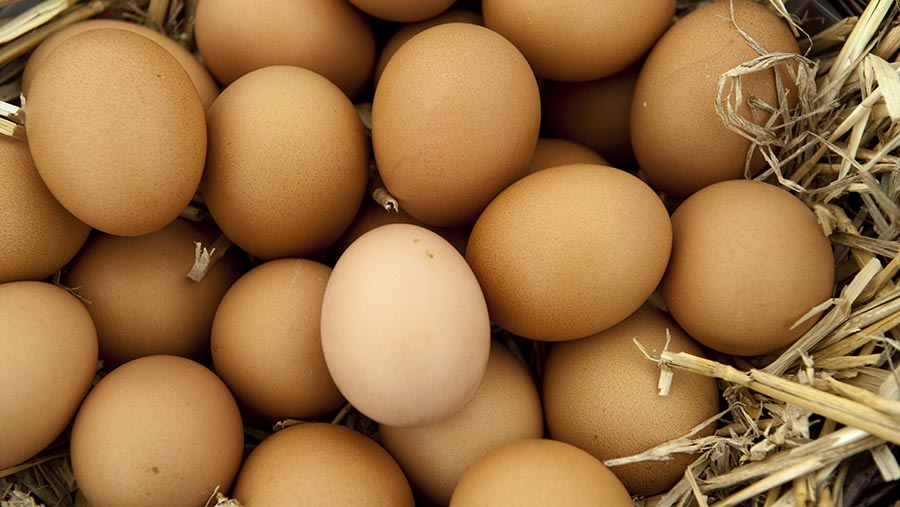New technologies key to keep poultry businesses profitable
 © Wayne Hutchinson/FLPA/imageBROKER/Rex/Shutterstock
© Wayne Hutchinson/FLPA/imageBROKER/Rex/Shutterstock Pressure on margins throughout the poultry supply chain will exacerbate the need for continued innovation and efficiency gains, according to David Neilson, Avara Foods breeding and hatcheries manager.
The recent performance of the sector has been positive, with chicken now accounting for more than 50% of all meat eaten in the UK, Mr Neilson told the recent Egg and Poultry Industry Conference (Epic) at the Celtic Manor Hotel in south Wales.
See also: The new EPEF 420 broiler standard and how to achieve it
But while consumption has grown by 20% over the past decade, this has mainly been achieved off the back of lower retail prices, with a typical breast fillet falling from £11.29/kg in 2009 to just £6.00/kg in 2019.
“I know we have found a lot of efficiency in our industry over the years, but I don’t imagine for a minute that our costs of production have dropped by anything like 50%,” said Mr Neilson. “It is that drop in price that is driving consumption.”
The “big four” supermarkets were continuing to fight for market share against the discounters by matching their low prices on chicken, he added. “Our customers are prepared to give margin way to keep hold of shoppers and we know that margin squeeze is going to get passed down.”
Problems of accessing labour post Brexit was another challenge, while a predicted 5% year-on-year increase in the minimum wage would also push up costs.
Innovation and automation were therefore essential to meet these challenges and should be applied at all stages of the supply chain to stay viable (see “Examples of innovation in the poultry sector”).
“Keep calm, and automate everything,” was Mr Neilson’s advice.
Data solutions
Innovation is also essential in the egg sector, added David Brass of The Lakes Free Range Egg Company.
His egg-producing and packing business had adopted many new technologies in the quest for greater efficiencies, including the monitoring of bird acoustics to try to identify any welfare problems at the earliest stage, and thermal imaging to monitor behaviour.
It was also crucial to have live data, so managers could react quicker and make better decisions. “If your data is historical, your birds may be dead before you find out you have a problem,” said Mr Brass.
It is also essential to integrate all data sources. “A single measurement may tell you something is wrong, but you need all the other data to give you the whole picture.”
British Poultry Council chairman Graeme Dear agreed that “data management will drive efficiency”.
“In our new dawn, post Brexit, capture everything you can measure – even if you don’t think you’ll need it today. Invest to harness the data to deliver the additional percentage margin of profit.”
Examples of innovation in the poultry sector
On the broiler breeder unit: A robot has been designed to detect hens that are prone to laying on the floor in broiler breeder units, and will move them on, encouraging them up into nest boxes.
In the hatchery: Laser technology can now identify infertile eggs and remove them from the hatchers at an early stage, reducing waste and cost significantly. Remaining eggs will all have viable embryos, which can be injected “in ovo” with relevant vaccines, so reducing the need for antibiotics.
On the broiler farm: Monitoring devices track up and down the shed, measuring air quality, health and welfare, moisture in litter, fallen stock, injured birds, feeders and drinkers not working properly, sending alerts to the stockman. Automatic catchers have also improved in recent years, in terms of welfare outcomes for both birds and people.
At the processors: Increased use of robotics will help reduce the need for and cost of human labour, especially for weighing and packing portions, 24 hours a day.
